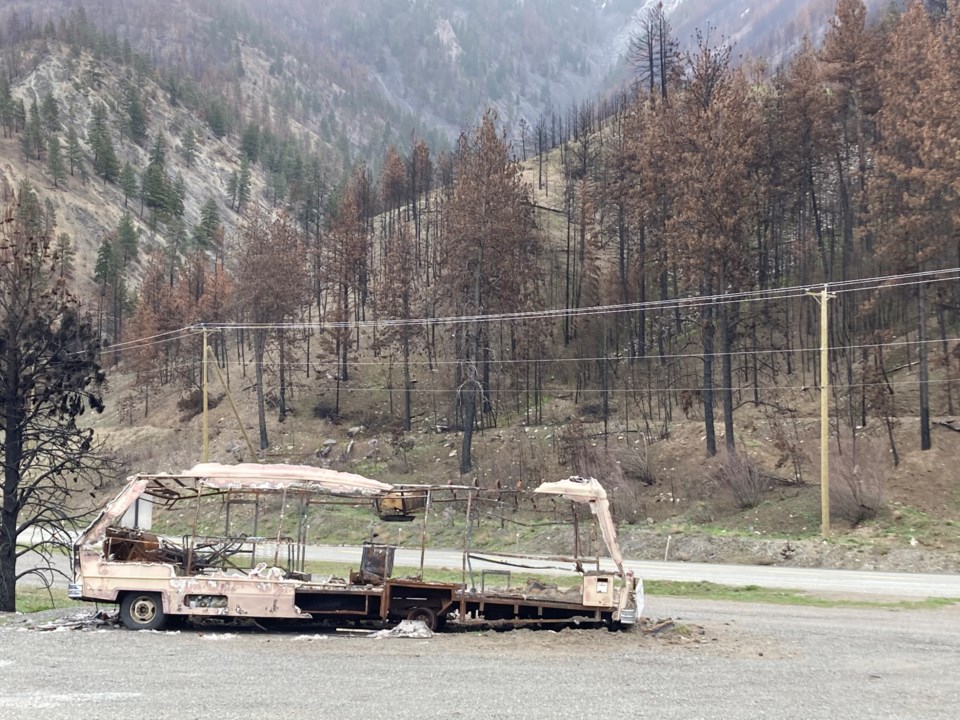In 2021, British Columbia endured one of the worst wildfire seasons on record, fuelled in part by record-breaking temperatures across the province in June—including in Whistler.
Tragically, almost 600 British Columbians lost their lives to the heat wave, while nearly the entire village of Lytton burned to the ground.
Aside from some smoky skies, Whistler largely avoided the impacts of the 2021 wildfire season—but that doesn’t mean local officials are sleeping easy.
“It’s not a question of if we have a fire. It’s more a question of when, which is why we need to have plans for the worst-case scenarios,” said Whistler Councillor Arthur De Jong. “Out of all the issues and things that I deal with, especially environmentally and public safety, the risk of wildfire is in a league of its own. It is by far our biggest threat.”
Avoiding a similar fate to Lytton is top of mind for the Resort Municipality of Whistler (RMOW), which is why mayor and council voted to adopt a new Community Wildfire Resiliency Plan (CWRP) at the April 5 council meeting.
The new CWRP—which replaces the 2011 Community Wildfire Protection Plan—was drafted by B.A. Blackwell & Associates with input from community stakeholders and RMOW staff.
In the 145-page document, 32 recommendations have been put forward to make the community more resilient to wildfire. This includes reinstating the RMOW Wildfire Working Group, which will be renamed the Community FireSmart and Resiliency Committee, that had its first meeting since 2017 last month.
The committee will be expanded to include members from the RMOW, Whistler Blackcomb, BC Wildfire Service, Ministry of Forests, Lands, Natural Resource Operations and Rural Development, the Cheakamus Community Forest and representatives from the Squamish and Lil’wat Nations.
Once the committee is reinstated, it will work to implement the recommendations of the plan.
While the plan recommends thinning forested areas in and around Whistler, particularly along the Highway 99 corridor, FireSmarting high-risk neighbourhoods is its highest priority.
“I think we need to do a lot more FireSmart,” said Heather Beresford, environmental stewardship manager for the RMOW, in a presentation to council. “I don’t want to reduce what we’re doing for thinning, but you look at Lytton—that was not a forest fire after it hit the town. After that, it became a structure, after structure, after structure fire, so that’s what I am very worried about.
“This work on the outside of the community is important and helps, but if you have those [fire] brands landing in the middle of a neighbourhood, and now the whole neighbourhood’s burning because they are not FireSmarted, we’re done.”
The plan recommends more FireSmart assessments to take place on private properties. These assessments are done for free as part of the FireSmart Home Partners Program. To encourage residents to deal with hazards, the plan also recommends a rebate program be established, which could cover up to $500 for removing identified threats.
In tandem with the FireSmart assessments, the plan also recommends creating a rooftop sprinkler program for residential properties in the municipality. Pre-installing rooftop sprinklers reduces the time and resources needed for installation in the event of a wildfire.
The plan will also see some of Whistler’s trails widened and thinned to allow emergency crews 4x4 access into difficult terrain. The plan specifically recommends the Flank Trail and Green Lake Loop as priorities for this work.
“I know I felt a little consternation when I saw these recommendations ... You’re considering road-upgrade projects along some of our key trails, trying to improve access to the frontcountry,” said acting Deputy Fire Chief Steve Doyle.
“[But] it’s been shown in other communities when they’ve had fires that being able to get crews into the forested areas to be able to take response before it’s in our backyards has been really crucial to saving and protecting those communities.”
Taken as a whole, the new Wildfire Resiliency Plan is “more comprehensive” than its predecessor, De Jong added.
“I’m impressed with its comprehensive approach to managing the risk,” he said.
“It’s more detailed. It is more tactical with where our money is best spent on fuel reduction. It identifies more of the higher-risk areas and is more specific. I think it gives us more accuracy on where to spend the money with the funds we do have.”




